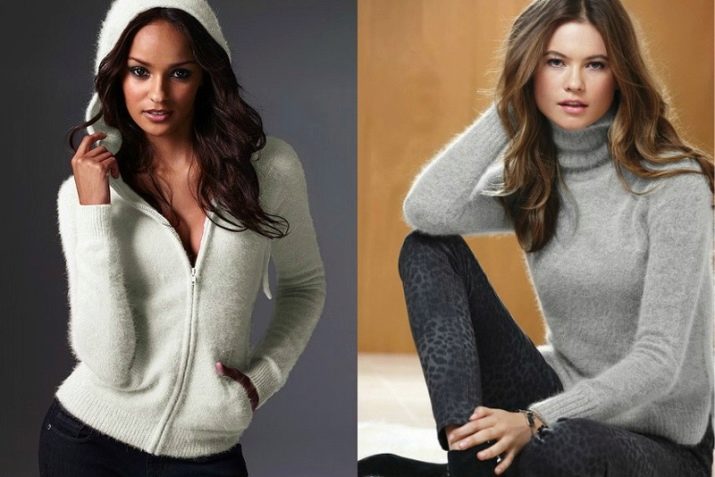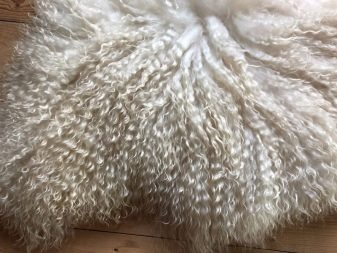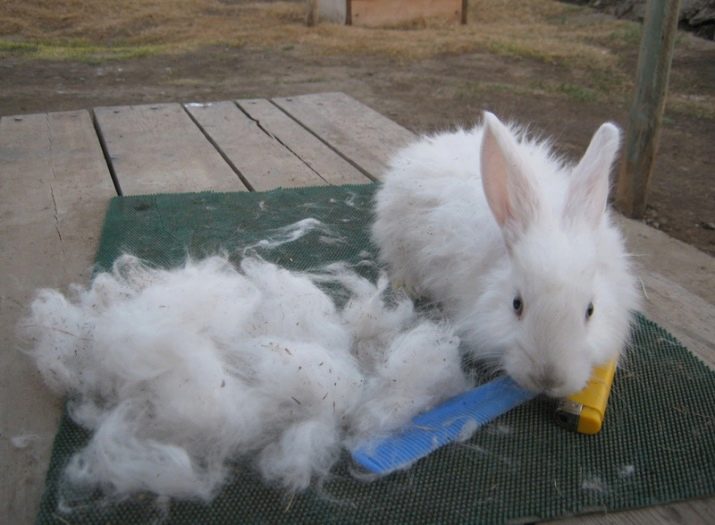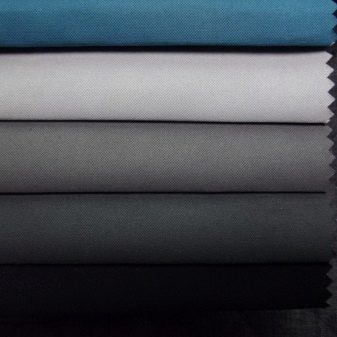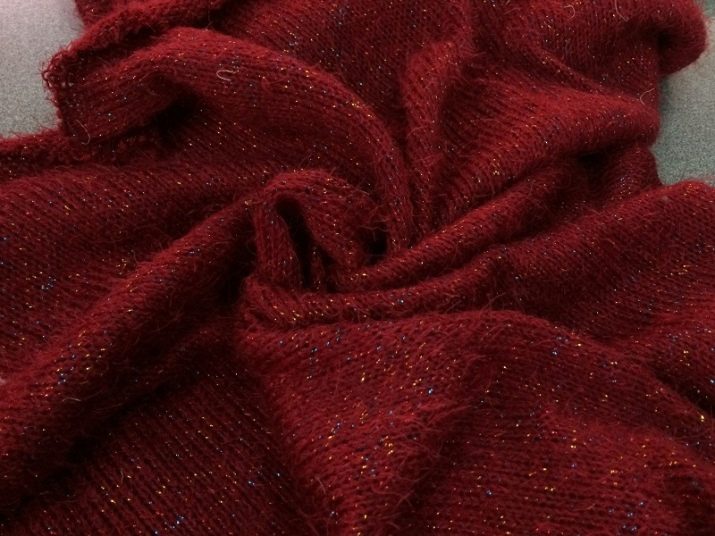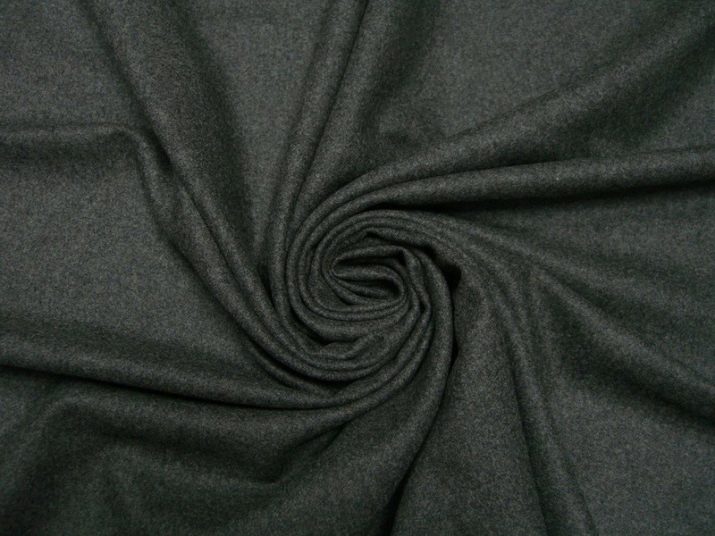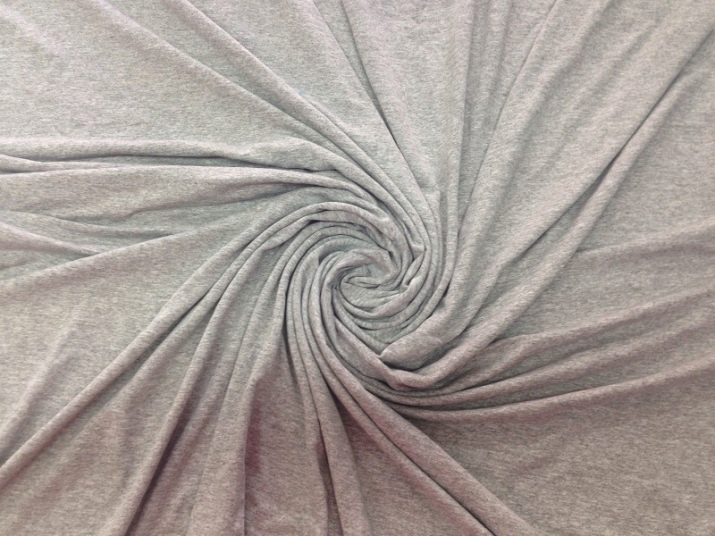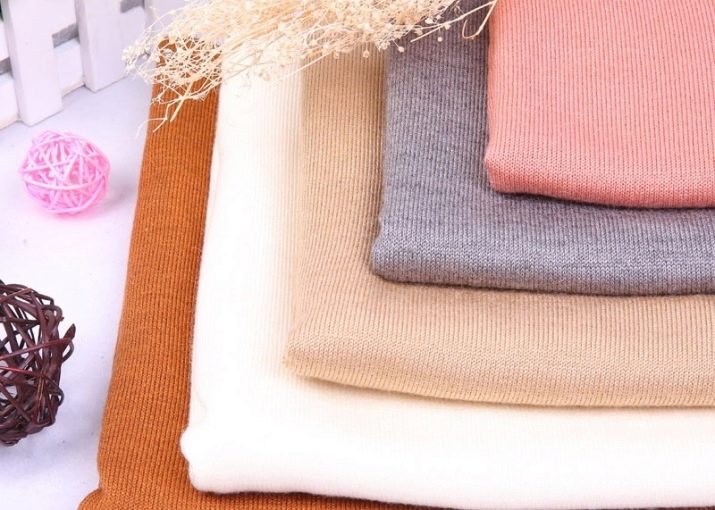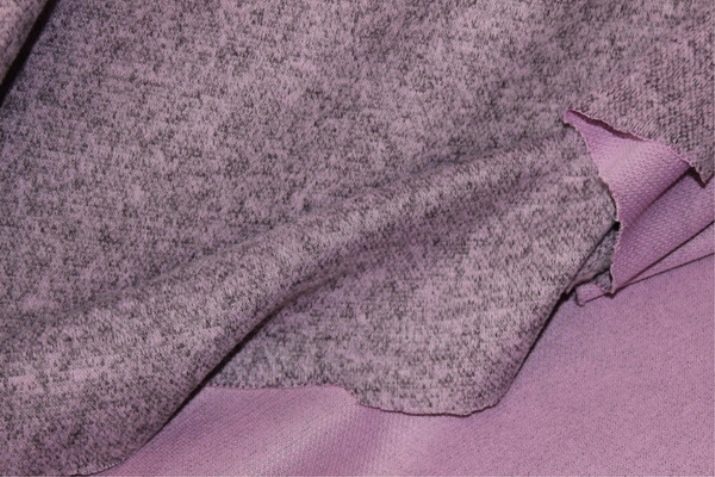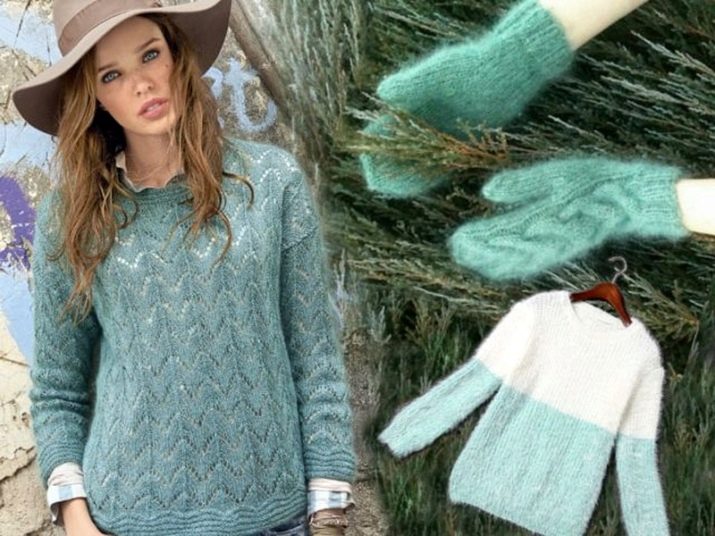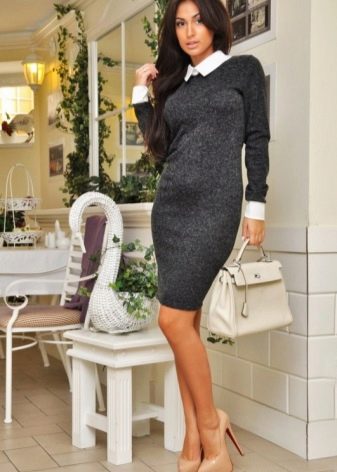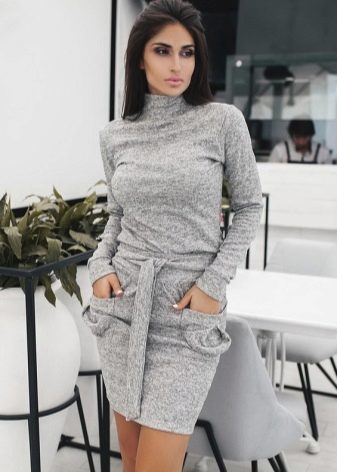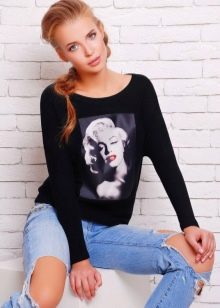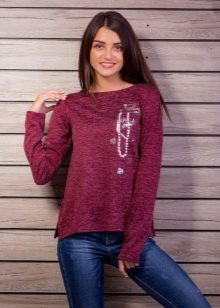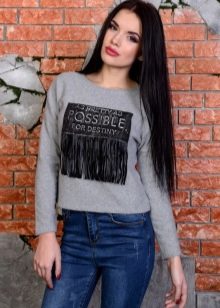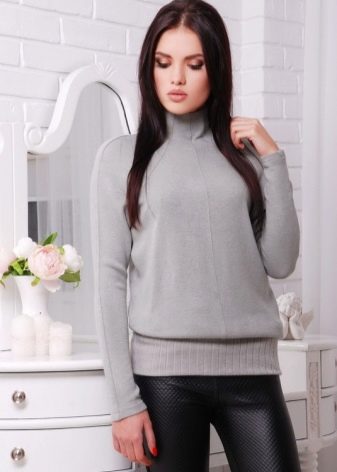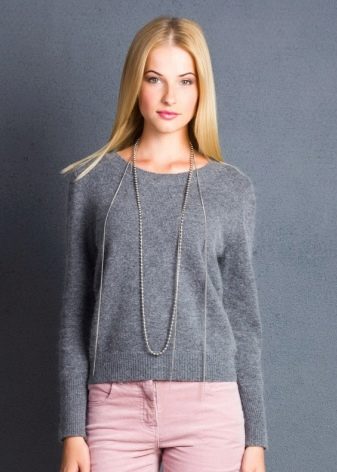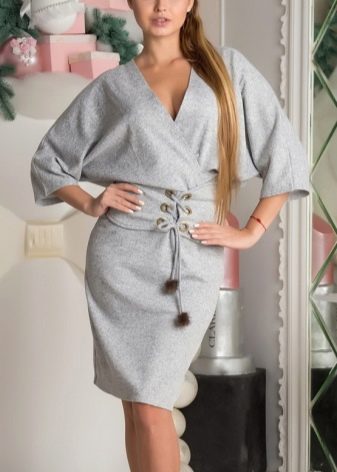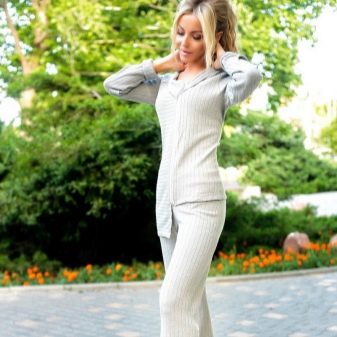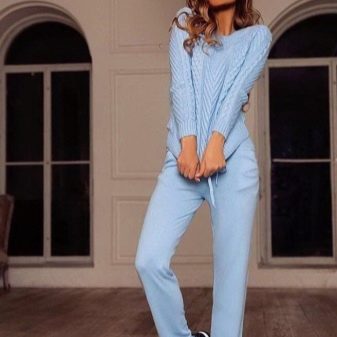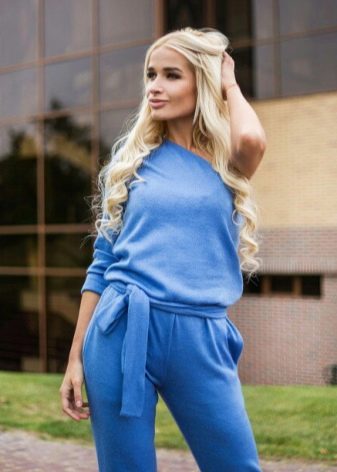With the arrival of the autumn-winter period, the warmth escaping us is increasingly appreciated. To feel comfortable dank in autumn or frosty winter, many people prefer to dress warmly, opting for woolen clothes.
Angora is one of the most popular variants of autumn-winter fabric. Things made from such a material not only retain heat perfectly, but are also distinguished by their softness. Let's take a closer look at this material, let's look at its composition, features and applications.
Description
Angora is a Turkish fabric that is made from down of the Angora goats, which is why it received such a name. Now similar material is also produced from down of the Angora rabbits. Unfortunately, it does not differ in sufficient strength, therefore in the composition of such a material in a large number there are additional fibers. Frequent cases of making fine-wool fleecebut such a fabric does not possess all the characteristic features that are inherent in the true Angora material.
The natural color of the fabric is white, gray and black. Fortunately, such fibers are perfectly amenable to the dyeing process, so on the shelves you can find various dresses and suits made of Angora, which please the eye with an abundance of colors and shades. A distinctive feature of angora is soft insulation. In addition, natural products are so insignificant weight that they seem almost weightless.
Composition
The natural fluff of the Angora goat is characterized by the difficulty of processing, the fibers are able to strongly electrify and slide. Therefore, textiles are often made from a mixture of fluff and the addition of other materials.
The most common combinations of the composition in the Angora fabric include:
- 70% Angora goat down and 30% nylon;
- 50% down, 25% merino fur and 25% synthetic fibers;
- 40% of angora down, 50% of any other type of wool and 10% nylon;
- 70% wool and 30% natural silk;
- 15% of angora down, 10% of wool fibers, 50% viscose and 25% nylon.
If you process the Angora fluff with a laser, then the production process of the Angora fabric is greatly simplified and you can get a textile product that is 100% wool.
If goat wool is present in the composition of this material, then on the product label you can find an abbreviation of two Latin letters “WN”. If there is a rabbit fluff in the angora, then the letter “WA” will be written on the product. Frequent cases are also combinations of similar fibers. Please note that the greater the proportion of the Angora goat fluff present in the product, the higher its value is set at a higher level.
In a relatively inexpensive material there is no more than 20% natural wool. Exclusive versions of fabrics with an Angora content of 80% can be very expensive and rarely appear on the mass market. From such material sew dresses and costumes eminent Fashion House. In textiles, whose composition consists of 25–30% of an angora, their thermal insulation properties and characteristics are almost as good as similar material made of rabbit down.
Varieties
Depending on which animal's hair is used (rabbit or goat), as well as the presence of additional fibers, there are several varieties of Angora fabric.
- Mohair. It is made exclusively from goat fluff, the fiber length of which can reach 30 centimeters. With an older animal, you can get wool with increased density. The softest material is made from the wool of a lamb, whose age has not reached 6 months. Mohair surpasses rabbit fluff in strength.
- Angora - pure rabbit fur. The fiber length can reach 20 centimeters. Such fibers are distinguished by sufficient complexity of processing, since the wool constantly strives to crawl out and it is quite difficult to fix it. Therefore, only about 20% of these fibers are added to textiles.
- Lana refers to high quality material, which is characterized by high cost. It is made on the basis of merino wool. There are two types of such fabric: derived from fine or regular merino fur. The softer and thinner fluff is used in the production of such a material, the more tender such a fabric will eventually be.
- Angora Metallic. The composition of this material also includes acrylic fibers, including silver-plated and polymer fibers. Thanks to such components, the down stays in place and does not get out of the fabric.
- Melange Made from natural wool, in addition to which synthetic fibers are added, made in contrasting shades. This technology of weaving yarns allows you to create a visual effect of marble chips.
- Suprem It belongs to the Angora knitwear, which add lycra. Such knitwear perfectly stretches. Looks great and worn without deforming the material.
- Containing acrylic or viscose. Such material belongs to inexpensive, but at the same time warm and soft fabric options. Often, elastane or polyester is also added to the composition to create a knit fabric.
- Soft refers to synthetic knitted fabrics, being a good quality imitation of angora down. Most often made with the addition of polyester and elastane. The composition does not contain natural wool. Angora software can be performed with or without a nap. If you combine it with Lurex, then you get material that is perfect for a festive event.
Please note that in some people Lurex can cause a reaction, so clothes that include this ingredient should be worn over thin cotton underwear.
Care
Things made from angora fabric require careful and careful attitude. It is not recommended to wash them very often. If financial resources allow, then it is better to dry out the product.
If you prefer to wash things yourself, then it should be done with extreme caution. Since from contact with water, angora clothes can not only be deformed, but also significantly change in size, which is especially important when it comes to hot water. It is necessary to erase products from similar fabric in hardly warm water, without putting any efforts. It is recommended to add a few tablespoons of baby shampoo to the water. The thing should be held for several minutes in a similar solution from one and the other side.
It can not be crushed in any case. After that, the clothes should be thoroughly rinsed in warm water. Do not twist or squeeze the product out of the angora. You need to place it on a towel and get a good wet. After that, the thing is also spread on a dry towel, which must be changed periodically. Be prepared to wait until the fabric is completely dry, which can take a long time.
Only if you carefully wear and care for things from the Angora fabric, will they warm you up in the cold, preserving your aesthetic appearance.
Application options
Angora fabric has found wide application in textile production.They make clothes for children and adults out of this material - they sew hats, mittens and scarves, sweaters, blouses and even various costumes. You can also find warm plaids or capes made from such fabric. Many women who are engaged in needlework, prefer to buy Angora yarn to independently link unique things that will fill up an adult or children's wardrobe. The composition of such yarn is often included mohair or angora.
Recently, a variety of angora dresses have been very popular. Distinguished by a variety of colors and different styles, they can be included in the basic wardrobe, becoming the basis for everyday look. Original warm angorov dresses girls also prefer to wear at various events. If we are talking about a suit that was sewn from a similar material, then often it includes a jacket and a skirt.
Fashion trends
Women who prefer to look stylish and fashionable should pay attention to non-standard knitwear sweatshirts. Similar products contain an original pattern or application. The most popular options include cartoon characters, various inscriptions and logos. On many knitted sweatshirts you can find Scandinavian motifs, patterns and other ethnic elements.
You can experiment a bit with the size of such products, as oversized remains in fashion.
Classic-style fans can also find trendy new items to replenish their wardrobe. These include pullovers and turtlenecks, which are made of angora or mohair. Designers recommend combining such things with a skirt or pants.
A variety of models of warm dresses, made from Turkish knitwear, is amazing. They may vary in length, but always look feminine and stylish. The most popular models are fitted dresses that are made of Angora soft fabric. On such products there may also be a voluminous relief or an openwork pattern.
Knitted suits have not lost their relevance. This season, designers offer to purchase not only the standard set of skirt plus pullover, but also knitted angora trouser suits.
For trendy new items can also be attributed to knitted wool overalls. This outfit looks very original, besides, it will be very warm and cozy even on a walk on a cold winter day.
Reviews
Many girls, in whose wardrobe there are things made of Angora fabric, leave positive reviews about this material. They note that such products are very warm and pleasant to the body, are soft and light weight.
Girls prefer sweaters, dresses and costumes from Turkish knitwear. or other options for angora tissue. Many people like Angora Soft, because it looks like a natural material, while maintaining the properties of Angora, but it is much cheaper.
The girls note that it is necessary to be very careful about things from such material, because, otherwise, they will quickly cease to look beautiful and stylish.
If you want to look fashionable and feel warm and comfortable at the same time when it is cold outside, then angora items must be present in your wardrobe.
See the next video for the correct way to wash wool items.





